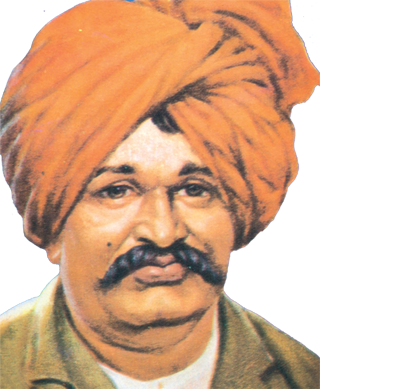Kurmi Ancient

Shahuji Maharaj
18 May 1682 - 1749 MangaonShahu Sambhaji Raje Bhosale Chhatrapati Maharaj (1682-1749) was the fourth Emperor of the Maratha Empire created by his grandfather, Chhatrapati Shivaji Maharaj, and was officially the Raja of Satara (now in Maharashtra, India). More popularly known as Chattrapati Shahuji Maharaj, he came out of captivity by the Mughals and survived a civil war to gain the throne in 1707.
Family
Shahuji had four wives, and fathered two sons and four daughters. He adopted two sons, Meherban Shrimant Fatehsinh I, Raje Sahib Bhonsle and Shrimant Rajaram II Raje Bhonsle Chhatrapati Maharaj Sahib in 1745 (who succeeded him as the Raja of Satara.
Expansion of the empire
It was under the Shahu that the Marathas empire became the largest in India at this time. The Maratha empire expanded in four directions, deputies Scindia, Holkar in the east by Bhonsle, in the west by Dabhade and in the south by Fateh-Singh Bhosale and others.
Shahuji's primary accomplishment was in stabilising the fractured Maratha empire after the defeat of the Mughals by the Marathas. During the War of 27 Years many Maratha nobles became powerful. He was the binding force of the Marathas.
Shahuji was instrumental in giving space to new talents irrespective of their background. During his tenure almost all sections of society rose to power. Perhaps the Maratha empire was the most socially mobile empire which accommodated many new socio-economic groups which hitherto were miles away from power and that caused a socio-political revolution.
Socio-political revolution
His reign saw rise of many like Balaji, Shinde and many more talented people who later became the strong support on which the Maratha empire expanded and flourished, especially Peshwa Bajirao and the Holkars in the North. He is credited with establishing the position of Peshwa, which later became a hereditary position for those from a humble background.
Bahiroji Pingale, the younger son of Moropant Trimbak Pingle was the first Peshwa of Shahu I. When Kanhoji Angre attacked Satara in 1711, Bahiroji Pingale was taken a prisoner by him. Immediately Shahu I ordered Balaji Vishwanath to ensure his release and also gave him authority in the form of the post of Peshwa, so that he could negotiate with Kanhoji Angre on behalf of the king. After the premature death of Balaji Vishwanath he appointed a young Bajirao as Peshwa on April 17, 1719 . After 20 years tenure of Bajirao, he appointed Nanasaheb, as Peshwa. These three Peshwas were extremely efficient and Shahu always acknowledged their efforts to enhance the Maratha Empire. He is also responsible for appointing Sarkhel Kanhoji Angre to the position of first Maratha naval chief, in return for his shifting his loyalty from the Tarabai camp. Shahu appointed Sardar Khanderao Dabhade as his "Sarsenapati" or Commander-in-Chief.